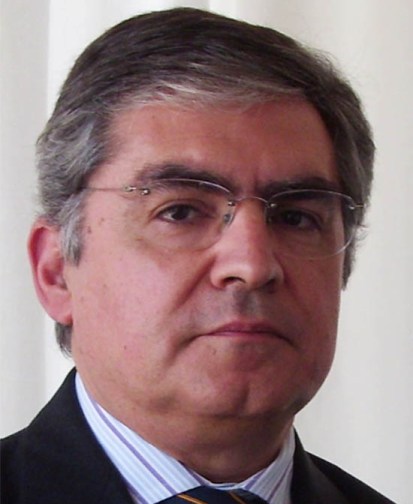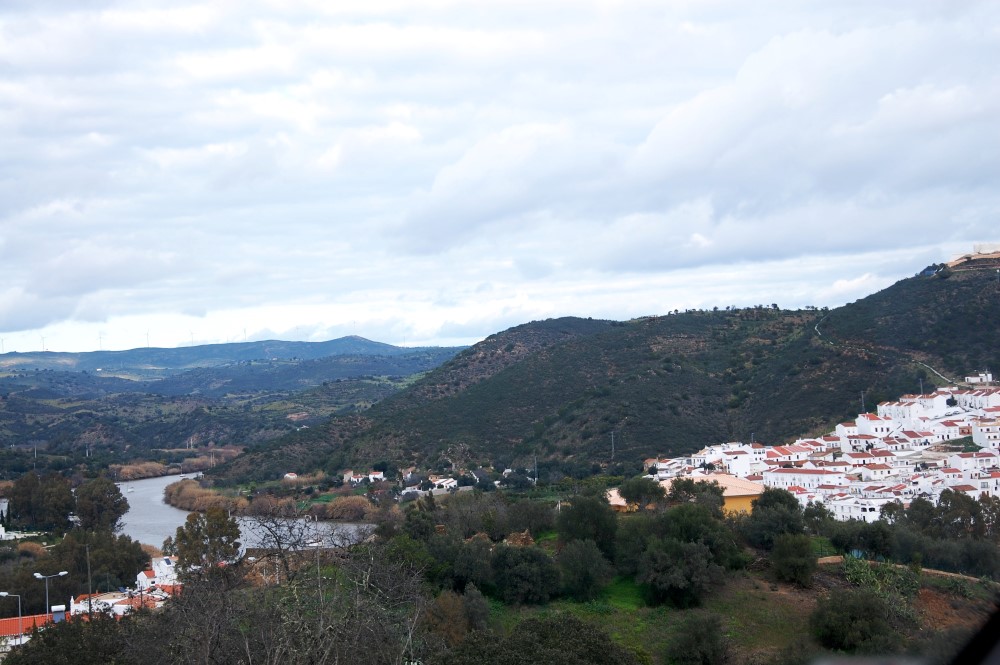 The problem is old and runs through the entire XNUMXth century. The Northeast Algarve has long been a sub-region on the verge of a nervous breakdown. More than that, with death announced.
The problem is old and runs through the entire XNUMXth century. The Northeast Algarve has long been a sub-region on the verge of a nervous breakdown. More than that, with death announced.
In the meantime, thirty years have passed since our accession to the European Communities, today the European Union. To make a brief assessment of the Northeastern Algarve during this period, I went to speak with some of the protagonists. Here is my opinion on the matter.
1. An exemplary story!
In the small sub-region of the Northeast of Algarve, which brings together the municipality of Alcoutim and the interior of the municipality of Castro Marim, it is nature that makes history, despite the various programs and measures of territorial intervention since the XNUMXs.
Let us recall, therefore, the PIDR (Integrated Rural Development Program) of the Northeast in the mid-80s, the accompanying measures of the 1992 CAP reform, which include the agro-environmental and agro-forestry measures, the community initiative programs Leader initiated in the 90s, the national programs of the various community support frameworks, the Feoga/Feader operational programs for agriculture and rural development, the Algarve regional operational programs, the Algarve-Andalusia cross-border cooperation programmes, the combat against desertification in the Northeast of Algarve.
Despite all these instruments of intervention, it is the vicious circle that dominates, namely, the desertification of natural capital leads to the depopulation of social capital.
With regard to the constellation of interests, and despite the reduced scale of the Northeastern Algarve, this sub-region does not seem to lack the protagonists: city councils, local development associations, forest owners associations, hunters associations, agricultural cooperatives, regional public administration, forest intervention zones, private agro-forestry service companies.
In a territory so lacking in resources and social capital, it is not surprising that the pulse of the sub-region takes place at the mercy of public policy instruments that are primarily driven by public authorities and their extensions on the ground: regional public services, chambers municipalities and local development associations.
And it is also not surprising that these organizations are the ones who determine the main lines of attack on local problems, with all the consequences that their preferences always imply and which include conflicts of interest over the most appropriate agroforestry exploitation model.
Not to mention the so-called “program success”, usually associated with high execution rates and public expenditure without real correspondence, in this case, with the socio-economic progress actually observed on the ground.
2. The agro-forestry exploration model and the economy of the Northeastern Algarve
In fact, to the outside observer, it seems that we are in a small laboratory for experimenting with instruments of territorial intervention that are new arrivals by virtue of our adhesion to the European communities.
Given the seriousness of the problems in question, it is not difficult for regional and local authorities to “build intervention programs”, which, by the way, the sub-region “already justified” for a long time.
Thus institutionalized, the sub-region is immediately eligible and available to the main beneficiaries of public policy measures.
This is the political-administrative face of the problem, with incentives to minister and results to be obtained at the end of the programs.
The other side of the coin, however, is a microeconomy on the threshold of subsistence and operating in a regime of severe multifunctionality, of enormous vulnerability in terms of agroecological sustainability, deep down in an extremely delicate microgeoeconomy in need of special, intensive and permanent care.
In practice, if the Northeast PIDR was still able to respect the subsistence economy and severe multifunctionality of the second half of the 80s, the same cannot be said about the accompanying measures of the 1992 CAP reform, and, in particular, of the agro-forestry measures of the 2080 community regulation, the “new whooping” in the Algarve's Northeast since 1994.
In fact, the expectation of 20 years of income compensation for losses associated with the change in economic activity and land use had very contradictory consequences, which even today, twenty years later, make their effects felt.
Agri-environmental and agro-forestry measures in the Northeast of Algarve need to be reframed in another model of development of the sub-region, which covers the entire Lower Guadiana and which recovers the agroforestry multifunctionality, through a new generation of “environmental payments or ecosystems"
In its original philosophy, the accompanying measures of the CAP reform aim to contain production, protect natural resources and promote the protection forest in lands and soils that are not very productive, thus recovering these soils for production at a later time.
In theory and in principle, they seem reasonably adjusted to the situation in the Northeast of Algarve. What happened was that the delicate balance that came from behind, which consisted of a subsistence economy, of severe pluriactivity and multifunctionality, was broken.
In fact, regulation 2080 substantially reduced the multiple use of the forest, initiated a pine forest monoculture, implemented the so-called protection forest with a very high density per hectare, 800 plants per hectare.
It is time for nurseries, designers and forest service contractors to do their part of the business.
Briefly, 30 to 40% of the owners opted for pure or mixed holm oak, 70% for pine forest monoculture. This forestry monoculture, by breaking the delicate balance that came from behind, may have resolved income compensation for some time, but blocked other possible solutions within the reach of agroforestry, which would have perhaps spared the pluriactivity and multifunctionality of the Northeast Algarve.
We know that the forest plays a fundamental role in combating soil erosion. This is what Eng. Victor Louro, responsible for the Plan to Combat Desertification in the Northeast of Algarve, tells us precisely about the high densities, in his book “A Floresta em Portugal” (2016), by Editorial Gradiva (p .234):
– The arboreal cover protects the soil through a living blanket, that is, from bushes that are born and grow in a relatively open forest, not very dense,
– The installation of the forest can be achieved with low soil mobilization,
– A correct installation and management allows for an adequate control of surface water runoff, once again saving the soil,
– The techniques for extracting woody material and cork must take into account the need not to compact the soil, using adequate equipment so as not to open up tracks that may be just as many banks of water runoff.
– The so-called clearing of the bushes done anyway and taking everything in front of you is a blunder for not feeding, precisely, the dead blanket.
In other words, with a more open and polycultural forestry, it would have been possible to conserve and perhaps improve the multifunctionality of the agro-forestry economy in the Northeast of Algarve, which also includes, for example, a greater balance through the recolonization of the holm oak and the installation of biodiverse pasture for small ruminants.
However, the decapitalization of families, the accelerated aging and the degradation of symbolic capital to which the “abandonment of the Northeast” is not unconnected, did not allow this to happen.
 3. The next twenty years
3. The next twenty years
This is 2016, twenty years have passed, and the income compensation granted under the 2080 EU regulation is coming to an end.
Do we now have an agro-forestry economy worthy of the name?
Do we have today a multifunctionality and pluriactivity worthy of the name?
Do we break the vicious circle of desertification and depopulation?
Did we at least “touristify” the remote interior and the Lower Guadiana?
In the area of cross-border cooperation, have we made progress worthy of the name?
Do we already have the navigability of the Guadiana assured to Alcoutim?
Unfortunately, we only made a “mitigation policy” and we cannot say that we have reversed the long trend in the Northeast of Algarve.
Over the next twenty years, agro-environmental and agro-forestry measures in the Northeast Algarve continue to make sense, mostly due to climate change, but they need to be reframed in another development model for the sub-region, a model that encompasses the entire Lower Guadiana and that it recovers agroforestry multifunctionality, through a new generation of “environmental or ecosystemic payments”.
Without this association between “multifunctionality and payment for services” the unavoidable decay of the Northeastern Algarve will be.
Finally, I leave here some topics of a development policy for the Northeastern Algarve and the Lower Guadiana.
The Northeast of Algarve needs some "ambassadors" to be able to rewrite its future:
– two or three historical and cultural icons,
– two or three high quality nature trails,
– two or three high quality branded products,
– two or three good circular economy practices,
– two or three floristic or faunal endemisms for observation,
– two or three prestigious events,
– two or three permanent residencies of an artistic and/or scientific nature,
– an actor-network who is always present and who cross-links the whole.
Final grade
To do all this, the Northeast of Algarve needs to return to multiple-use agroforestry, to carry out some niche agriculture, it needs to be exemplary in the fields of green economy and circular economy, especially in the cultivation of biodiverse pastures, with a view to the creation of small ruminants, but also the regeneration of soils, needs an exemplary pilot action, with a view to combating climate change, it needs to value various types of rural tourism along the Guadiana and the Guadiana riverfront. , finally, perhaps decisively, needs a solid program of “environmental and ecosystem payments” for services rendered to nature, the environment and the landscape.
It needs an actor-network and collective territorial intelligence.
Otherwise, we fear the worst.
Author António Covas is a full professor at the University of Algarve and a PhD in European Affairs from the Free University of Brussels


















Comments